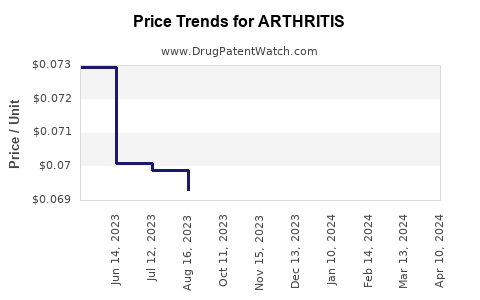Drug Price Trends for ARTHRITIS
✉ Email this page to a colleague

Average Pharmacy Cost for ARTHRITIS
| Drug Name | NDC | Price/Unit ($) | Unit | Date |
|---|---|---|---|---|
| ARTHRITIS PAIN ER 650 MG CAPLT | 51660-0333-50 | 0.06725 | EACH | 2024-11-20 |
| ARTHRITIS PAIN ER 650 MG TAB | 50268-0052-15 | 0.06725 | EACH | 2024-11-20 |
| ARTHRITIS PAIN RELIEVER 1% GEL | 70000-0555-01 | 0.10788 | GM | 2024-11-20 |
| ARTHRITIS PAIN ER 650 MG TAB | 50268-0052-11 | 0.06725 | EACH | 2024-11-20 |
| ARTHRITIS PAIN RLF 0.075% CRM | 00536-1118-25 | 0.08022 | GM | 2024-11-20 |
| >Drug Name | >NDC | >Price/Unit ($) | >Unit | >Date |


